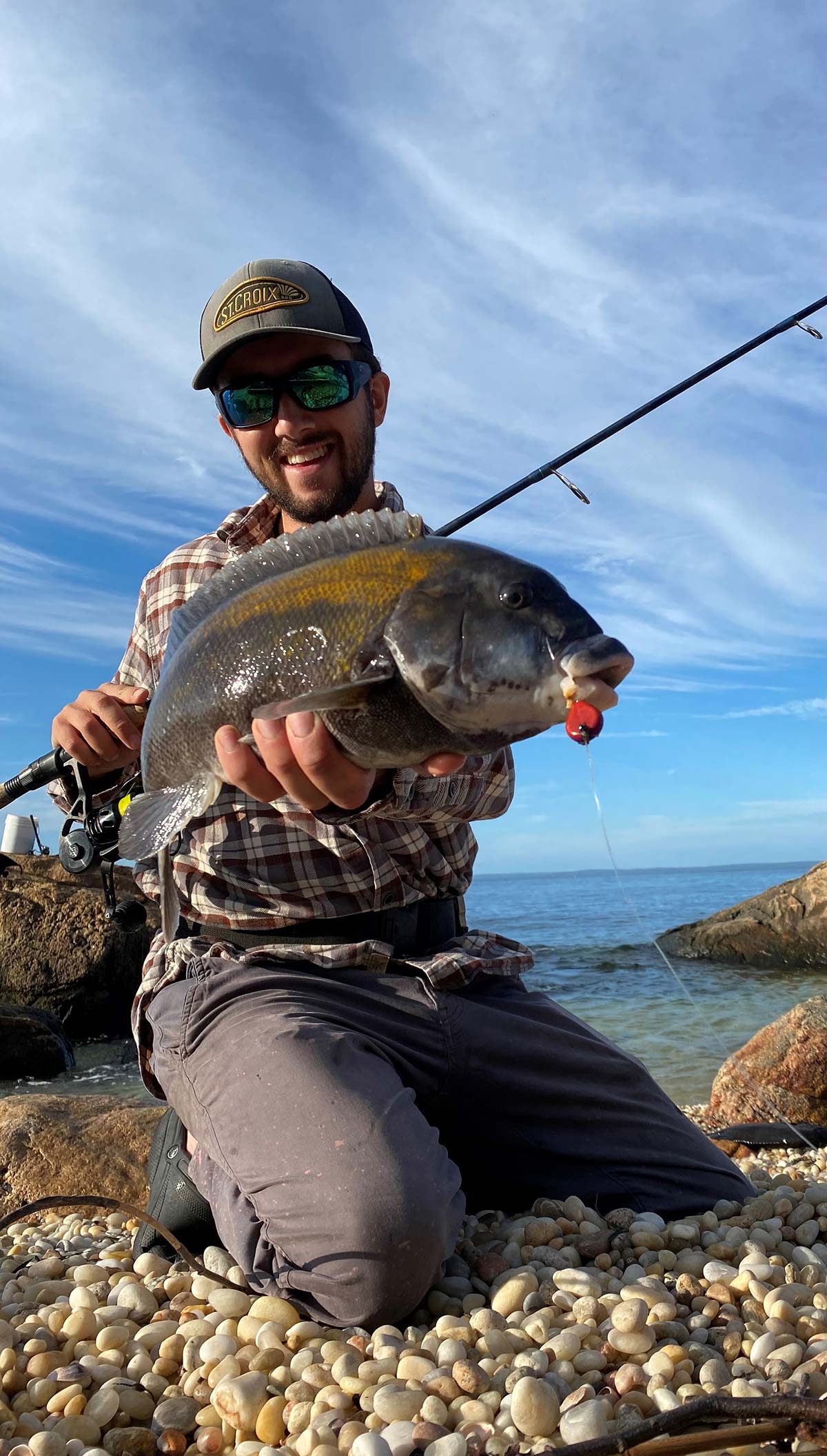
Having two different setups for shore-based tautog will improve your success.
I’m addicted, I’ll admit it. Something about tog fishing from shore draws me in. Whether it’s the hit, initial bulldog runs for the rocks, or just the fast and furious action once I get the tog chewing, land-based tog fishing is something that I can’t wait to do once the fall season rolls around.
Schooled initially, my first forays into this type of fishing were a trial and error kind of thing. At first, it was finding them, then it was working through being impatient, and finally, it was using the proper tackle to land some of these bullies, which is when things really got fun!
Jig Setup
For me, it boils down to a two-rod combo when hunting for tog from the shore, one being a jig rod and the other being the rig rod. The jig rod should be a lighter setup for more finesse applications when you have less structure to get caught up on. Something in the 7- to 7-1/2-foot range is long enough yet maneuverable enough to use a jig off the shore in my experience. For me, the sweet spot for jigs from the shore is about 3/4-ounce; I’ll go down to half-ounce in some cases when current is very minimal and I’m trying to float a piece of crab down into structure. But once I get above 1-1/2 ounces, I get that feeling that I’m lobbing a sinker and the point of fishing a jig does not make sense to me anymore from a fun standpoint.
With a jig setup, I’ll stay along the light trend with a 4,000 size spinning reel, 15 to 20-pound braid, and a 5-foot length of 30 to 40-pound leader material. I’ve grown fond of Seaguar’s Inshore fluorocarbon for its lower price but still able to offer advantages over monofilament, such as better abrasion properties. The leader connects to the jig directly and the braid with a Uni-to-Uni Knot.
Jig choices are up to the user’s preference. An array of styles and colors are on the market of ever-growing blackfish jigs these days. A few that I had used before and had much success with are S&S Bucktails White Chin Wreckers, Joe Baggs Lay Perfect Tog Jigs, and Tsunami Tog Treats.
Rig Setup
Also known as the “not messing around setup,” when employing rigs for tog fishing off the shore, I use a heavier rod that can wrestle some of the toughest tog out of their domains. Length is the first key feature when selecting the right stock for the job. I like using a rod 8 feet in length or over for heavier fishing. The reason for this choice is accuracy with casting rigs and leverage when fighting a fish in certain situations. A jetty, for example, will call for a longer rod due to reaching over the rocks and making sure your line does not graze it. I feel like a longer rod helps keep a fish out of the structure when reeling them off the shore.
Fifty-pound Seaguar Inshore fluorocarbon is what I tie my rigs with. The whole length of the rig is around 7 feet, but I have gone longer when break-offs are an issue. It starts with a sinker loop at the bottom, with either one or two Dropper Loops with 4/0 Gamakatsu Baitholder hooks 6 inches up from the sinker and 6 inches above that. The number of droppers depends on how sticky the structure is. Wherever snagging potential is high, I stick with one so that the other hook will not grab anything while reeling a fish in. The spinning reel is bumped up to a 5,000 size and loaded up with 40-pound braid for that extra strength if needed. Also, I should mention my rig rod is rated up to about 3 ounces. Usually, when I start using higher than that, the current is too strong, and I’m having a hard time holding the bottom, meaning the tog will not chew very well anyway.
Some tog sharpies like to use a small length of 10-pound mono to connect the sinker into the sinker loop. This will ensure that the rig will not break if the sinker gets stuck. You will only be out a piece of lead instead of retying the entire rig and wasting precious time during a prime slack tide period.
Give the two-rod approach a shot if you haven’t tried togging from the shore before. Having duel options when targeting a fun fish like blackfish makes the trip much more fun.




